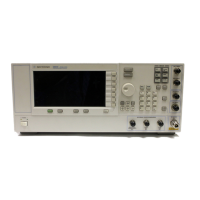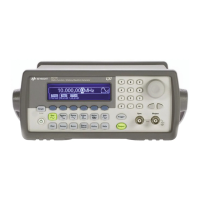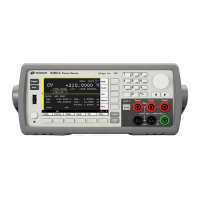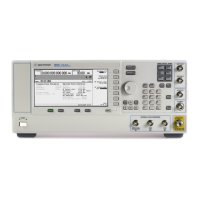342 Keysight EXG and MXG X-Series Signal Generators User’s Guide
Using Avionics VOR/ILS Softkeys for N5171B/72B and N5181B/82B with Option 302
Using VOR [VHF Omnidirectional Range] Softkeys
Using VOR [VHF Omnidirectional Range] Softkeys
The purpose of the VOR system is to provide directional information for aircraft
in flight. VOR ground based transmitter stations are strategically located to
provide complete coverage for air traffic. Each VOR ground based transmitter
station radiates a carrier in the range from 108.00 to 117.95 MHz, which is
modulated in a way that provides aircraft bearing information relative to the
VOR ground based transmitter location.
The VOR radiated electromagnetic signal consists of the sum of two antenna's
signals radiating at the same RF carrier frequency:
— The first antenna signal is from a non-directional antenna radiating a carrier
that is AM modulated by a signal that varies from 9480 Hz to 10440 Hz and
back 30 times per second.
— The second antenna signal is from a horizontal dipole which rotates at a
rate of 30 revolutions per second.The dipole produces a figure-eight
pattern. The RF voltages are opposite in polarity on front and back side of
the dipole pattern. Since the RF on one side is in phase with the RF radiated
from the non-directional antenna, a cardioid field pattern, which rotates at
30 Hz is formed. The signal received by the aircraft is an RF carrier with
amplitude varying at 30 Hz which is caused by the rotating cardioid pattern.
The carrier is also amplitude modulated by the 9960 Hz frequency
modulated sub-carrier. The 30 Hz FM signal provides the phase reference
and the 30 Hz AM caused by the cardioid pattern provides the variable
phase signal.
By demodulating the transmitted VOR signal, an aircraft receiver can compare
the phases of the two 30 Hz signals (REF Freq vs VAR Freq) to determine the
compass bearing to a VOR station. By tuning to two or more VOR stations and
recording each bearing angle, pilots can determine their exact location on an
air chart by triangulation. A VOR Bearing Angle is the phase difference
between the 30 Hz reference signal (REF Freq) and the 30 Hz variable phase
signal (VAR Freq). The 30 Hz reference signal (REF Freq) is transmitted from
the ground-based stationary VOR transmitter while the 30 Hz variable phase
signal (VAR Freq) is transmitted from the VOR signal that is rotating at 30 Hz
clockwise.
Figure 14-2 VOR Transmitter Antenna Pattern

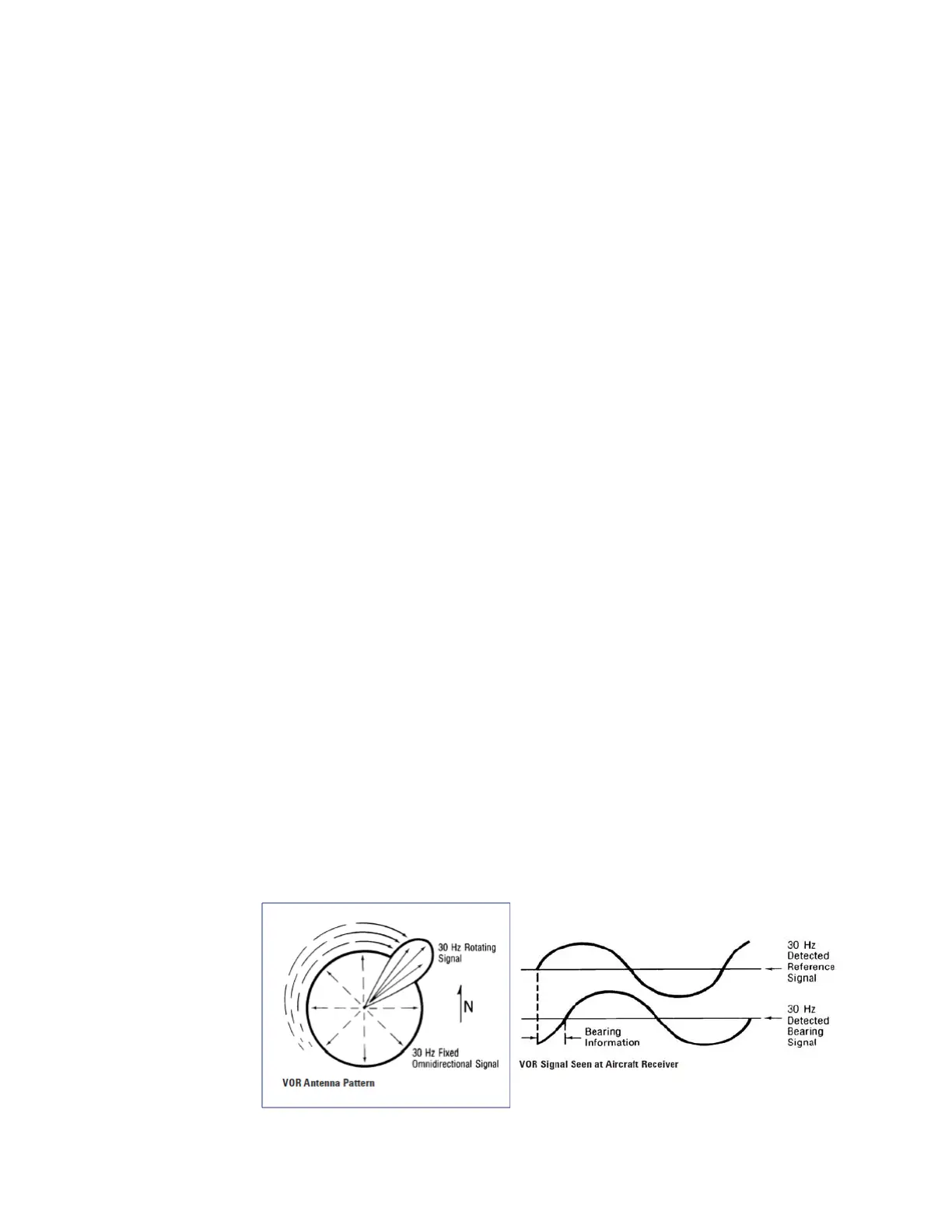